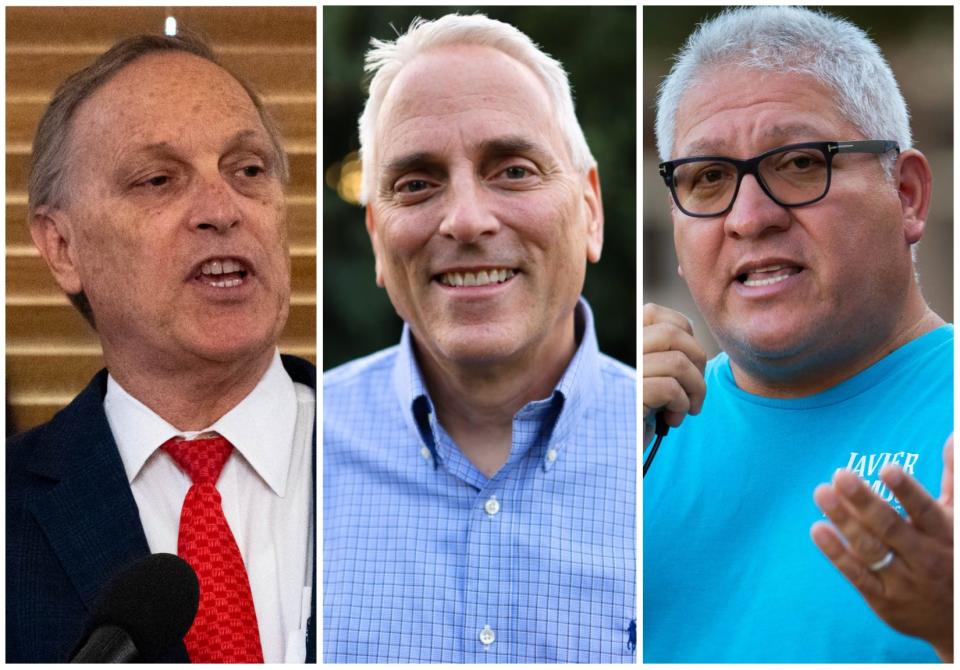If voters were eager to reject the MAGA line, why did they also trounce Clint Smith?
What to make of Congressional District 5?
The narrative of the election so far has been that Arizona voters – and particularly Maricopa County voters – largely were eager to reject the MAGA playbook.
But if that’s the case, shouldn’t Clint Smith have fared a lot better than he did?
Smith ran as an independent in what is considered a safe Republican district, which includes Gilbert, Queen Creek, Apache Junction and parts of south Chandler and east Mesa. He campaigned as the moderate’s choice, the guy who used to be a Republican but left the party once he felt it no longer represented conservative values.
Smith vowed to listen and work with all sides but also came out swinging, criticizing Biggs for his involvement in the Jan. 6, 2021, uprising at the U.S. Capitol. There were signs all over town urging voters to retire Biggs for these and other actions.
Smith always had a steep path to victory

Now, to be clear, Smith always faced a steep road to victory. I don’t think many folks expected him to boot a well-entrenched incumbent from one of Maricopa County’s Republican strongholds.
Yet Smith only managed to eke out about 6% of the vote, while his Democratic opponent, Javier Ramos, secured about 38%. This, in a district where independent voters outnumber Democrats by about 10 percentage points.
Combined into one candidate, those opposition votes wouldn’t have been enough to unseat Biggs.
No MAGA: Rusty Bowers endorses independent Smith over GOP's Biggs
But Smith spent almost $150,000, according to the latest round of campaign finance reports, a fraction of the roughly $1.8 million Biggs poured into this race. Yet Ramos spent less than $15,000 – and got more than six times as many votes as Smith.
Ramos garnered a similar percentage of votes to what other Democratic opponents received in Biggs’ old district in 2020 and 2018 – with no independent in the race then. And certainly not an independent who campaigned hard to appeal to moderates and conservatives who might have a problem with Trump.
But his trouncing doesn't help independents
Maybe that means Congressional District 5 voters are more partisan and polarized than we’d think, with few who’d prefer to cast their vote for an independent.
Or maybe Smith simply struck the wrong notes on some issues – such as his vocal support for gun control – to attract conservatives who didn’t want to vote for Biggs but also were concerned about how Smith might vote in the U.S. House. (Not to mention attract Democrats who likely saw little reason, policy-wise, to break with the party’s chosen candidate.)
But Smith’s trouncing does no favors for independents who might have been considering a run for other offices. Fully a third of the state has no candidates representing them.
And, barring some miracle that a top-two primary or other election reform could lessen the influence of political parties on this process, that’s not about to change any time soon.
Reach Allhands at joanna.allhands@arizonarepublic.com. On Twitter: @joannaallhands.
If you love this content (or love to hate it – hey, I won't judge), why not subscribe to get more?
This article originally appeared on Arizona Republic: Arizona rejected MAGA. So, why did voters also trounce Clint Smith?

